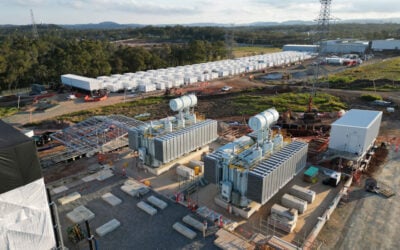One of CAISO’s control rooms. Image: CAISO.
Adobe is among the participants earning revenues from what is claimed to be an energy storage industry first – a trial rewarding California storage system users for conferring benefits to the grid.
Since August, California ISO (CAISO), the state’s independent grid operator has enabled Supply-Side Pilot (SSP), a load management trial programme proposed by Pacific Gas & Electric (PG &E), one of California’s three investor owned utilities (IoUs). Through SSP, behind-the-meter resources including residential, commercial and industrial energy storage systems can provide demand response, participating in CAISO’s wholesale electricity markets.
Adobe – the software company behind Photoshop and PDF reader Acrobat – has installed an energy storage system manufactured by Stem Inc. While Stem’s main business model is providing commercial storage systems for peak shaving, reducing business electricity bills, the system installed at Adobe is among a number of aggregated storage systems the California-headquartered commercial storage provider has entered into SSP.
According to Stem, the company has now successfully bid into CAISO’s real-time electricity market, one of three wholesale markets operated by the ISO (independent system operator), with the other two being day-ahead and hour-ahead markets. CAISO describes the real-time market as a “spot market to procure energy (including reserves) and manage congestion in the real-time after all the other processes have run”. The real-time market runs from 1pm on the day prior to trading taking place, closing 75 minutes before the trading hour begins. The market’s transactions are used to correct supply and demand imbalances on the grid, including the integration of variable renewable energy sources.
Try Premium for just $1
- Full premium access for the first month at only $1
- Converts to an annual rate after 30 days unless cancelled
- Cancel anytime during the trial period
Premium Benefits
- Expert industry analysis and interviews
- Digital access to PV Tech Power journal
- Exclusive event discounts
Or get the full Premium subscription right away
Or continue reading this article for free
Stem’s systems used a platform created for SSP by Olivine, a grid services company which is administering the pilot programme for PG&E. Olivine specialises in enabling access to markets for grid services.
“Highly replicable across other markets”
Stem claims it was able to bid into the real-time market using its own predictive software and was informed by data collected through a separate aggregation programme. The Stem system sets its desired price target and the software then selects the appropriate market bids and dispatches to the grid as required.
“The ability to leverage customer-sited storage for multiple applications is the foundation for unlocking the full potential of energy storage for both customers and the grid,” Stem Inc CEO John Carrington said.
“Once in place, these capabilities are highly replicable across other markets in the US and around the world.”
Aggregating customer-sited storage or demand response resources, sometimes referred to as the ‘virtual power plant’ concept, has been trialled in a number of forms around the world recently. There have been several use cases specifically for energy storage the trials have been conducted to assess, including bulk electricity sales and grid stabilisation and integration of renewable energy sources. These include small-scale trials in Australia, the UK and Kentucky, while Stem has previously told PV Tech Storage that it sees potential in a number of other markets for aggregation including Japan and the EU.
Similarly, industry figures and experts including Energy Storage Association executive director Matt Roberts and GTM Research grid analyst Omar Saadeh have said that aggregation and virtual power plants could be a key asset in helping to integrate renewables and provide grid services while generating revenues for the system operator or owner.
On the SSP trial, GTM’s senior analyst for energy storage Ravi Manghani said it exemplified the way that electricity markets are moving towards recognising the value of storage, especially when providing multiple services, such as providing grid services while also performing peak shaving for the customer.
“The SSP pilot is the first instance in California that aggregated behind-the-meter resources such as storage are going to participate in its real time wholesale market,” Manghani said.
“Storage can provide multiple use cases that in many instances are not exclusive, and can be stacked up. We’re seeing business models and regulatory conditions that enable monetisation of use cases on both sides of the meter.”
This story has been updated on 10 September 2015 at 17:00pm GMT to add Ravi Manghani’s comments.





